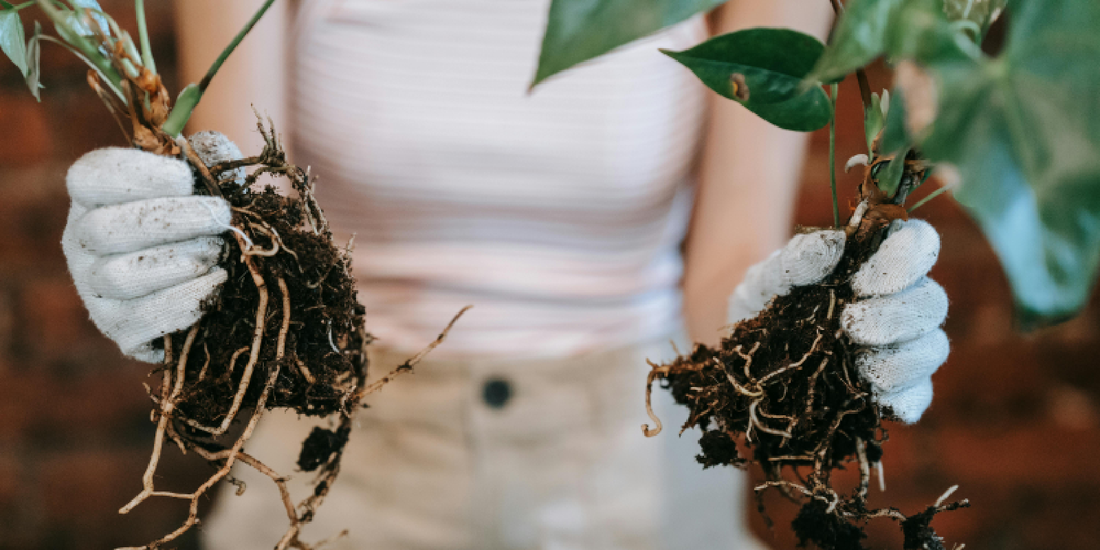
How to Use Plants as Wall Art
Share
In the world of interior design, walls are often treated as static backdrops for paintings, photos, or shelves. But in recent years, a new trend has emerged that transforms walls into living canvases—using plants as wall art. Unlike traditional décor, plants breathe life into a space, purify the air, and bring natural textures that paint and framed prints simply cannot match. By creatively arranging greenery on vertical surfaces, homeowners can turn empty walls into stunning focal points that balance aesthetics with well-being.
At amoyls, we believe plants should be more than background accents; they should be celebrated as design features in their own right. With products like the VerdantGlow S-Shaped 8-Tier Plant Shelf with Grow Lights, creating a lush vertical garden or wall display becomes not only possible but also practical, even in compact apartments or low-light rooms. In this blog, we’ll explore how to use plants as wall art, from styling ideas to practical tips, and why this approach has become a cornerstone of modern design.
Why Plants as Wall Art Are Transforming Interior Design
Plants as wall art offer more than just decoration—they introduce a dynamic quality to interiors. Here’s why they’ve become a must-have for designers and homeowners:
- Biophilic design connection – Humans have an innate attraction to nature. Integrating greenery into wall displays nurtures well-being, reduces stress, and improves focus.
- Air-purifying benefits – Many indoor plants filter toxins and increase oxygen levels, making wall art functional as well as beautiful.
- Aesthetic versatility – From minimalist arrangements with small succulents to dramatic hanging vines, plants adapt to diverse design styles.
- Space-saving solutions – Vertical walls maximize greenery without taking up valuable floor space.
- Seasonal adaptability – Wall plant displays evolve through the year, keeping interiors fresh and engaging.
By combining health benefits with a visual statement, plant-based wall art redefines how we perceive both greenery and interior design.
Choosing the Right Plants for Wall Displays
The success of plant wall art depends heavily on selecting species that thrive in vertical settings. Factors such as light levels, watering needs, and growth habits play key roles. Consider the following categories:
- Trailing plants: Ivy, pothos, and string-of-pearls create natural drapes, perfect for cascading effects.
- Compact foliage: Ferns, calatheas, and peperomias add dense greenery and thrive in grouped arrangements.
- Succulents: Low-maintenance and sculptural, succulents like echeveria or haworthia fit well into mounted frames.
- Flowering plants: Orchids or bromeliads provide pops of color amid greenery.
- Herbs: Basil, rosemary, and mint double as both wall art and culinary ingredients.
When pairing plants, think about contrasts—broad-leafed calatheas against delicate vines, or dark-leaved philodendrons against silvery succulents.
Design Approaches to Plants as Wall Art
There are multiple creative directions when using plants as wall art. Each approach transforms the wall differently:
1. Vertical Shelving
Plant shelves are the simplest and most versatile way to display greenery. The amoyls VerdantGlow S-Shaped 8-Tier Plant Shelf with Grow Lights is a prime example—it turns a bare wall corner into a cascading green sculpture. Its tall, wave-like shape creates rhythm, while the built-in grow lights ensure plants thrive regardless of room lighting. Arrange plants by height and color for a gallery-like effect.
2. Framed Plant Panels
Instead of framed photos, opt for framed greenery. Succulent frames or moss walls serve as living artworks. They work well in minimalist or Scandinavian interiors, offering natural texture without overwhelming the design.
3. Hanging Gardens
Macrame plant hangers, wall hooks, or ceiling-mounted planters allow vines and trailing species to hang like tapestries. This method adds softness and movement to rigid wall structures.
4. Grid or Trellis Walls
Wooden grids or metal trellises create geometric backdrops where plants can climb or hang. This approach suits modern and industrial interiors, combining order with organic growth.
5. Mixed Media Displays
Blend plants with mirrors, artworks, or lighting fixtures. For example, frame a mirror with ivy, or highlight artwork with strategically placed ferns.
Practical Considerations for Long-Lasting Wall Art
While plant-based décor is beautiful, it requires thoughtful planning:
- Lighting: Many walls lack natural sunlight. Integrated solutions like VerdantGlow’s grow lights keep plants healthy year-round.
- Watering: Vertical displays need efficient watering systems. Use self-watering planters, drip trays, or easy-access shelves.
- Weight and structure: Ensure walls can support the combined weight of shelves, soil, and mature plants.
- Maintenance: Choose resilient species if you prefer low-maintenance care. Dust and trim leaves regularly to keep the display vibrant.
The Role of Lighting – Why Grow Lights Matter
Light is often the limiting factor in wall-mounted greenery. Even with south-facing windows, not every part of the wall receives equal sunlight. That’s why products like the amoyls VerdantGlow S-Shaped 8-Tier Plant Shelf with Grow Lights are crucial. The integrated lighting system provides plants with consistent exposure, supporting photosynthesis and lush growth. This feature also extends plant choices—you can cultivate tropical varieties or delicate herbs even in dimly lit apartments.
How to Style Your Plant Wall with VerdantGlow
Here are actionable tips for styling with amoyls’ signature shelf:
- Layer plants for depth – Place trailing vines on the upper tiers and fuller plants like calatheas or monsteras on middle tiers.
- Play with symmetry and asymmetry – A balanced arrangement feels formal, while staggered placements add casual charm.
- Color contrasts – Use variegated plants to break up uniform greenery and create visual highlights.
- Seasonal rotation – Swap flowering plants seasonally to keep the wall dynamic.
- Complement furniture – Position the shelf where its natural curves align with other room elements for design harmony.
The S-shaped structure naturally draws the eye upward, making it a sculptural statement beyond its practical use.
Benefits Beyond Aesthetics
Using plants as wall art isn’t just about beauty. Benefits include:
- Improved mood: Studies show greenery reduces stress and enhances creativity.
- Indoor air quality: Plants absorb toxins like formaldehyde, improving breathing comfort.
- Enhanced acoustics: Dense foliage softens echoes in open-plan homes.
- Sustainability: Living walls reduce reliance on synthetic materials for decoration.
When combined, these benefits make plant-based wall art a holistic investment for both home and lifestyle.
Final Thoughts – Making Your Walls Come Alive
Walls don’t need to remain static or lifeless. By embracing plants as wall art, you can transform ordinary interiors into lush, living environments. Whether through small framed succulents, dramatic trellises, or multi-tiered plant shelves with integrated lighting, the possibilities are endless. The amoyls VerdantGlow S-Shaped 8-Tier Plant Shelf with Grow Lights embodies this philosophy—blending design, practicality, and sustainability. It empowers anyone to create a living masterpiece on their walls, regardless of space or lighting conditions.
Plants as wall art are more than a design trend—they’re a statement about how we live, reconnecting us with nature inside our homes. If you’re seeking a décor upgrade that feels timeless yet modern, sustainable yet stylish, it’s time to make your walls come alive with greenery.
